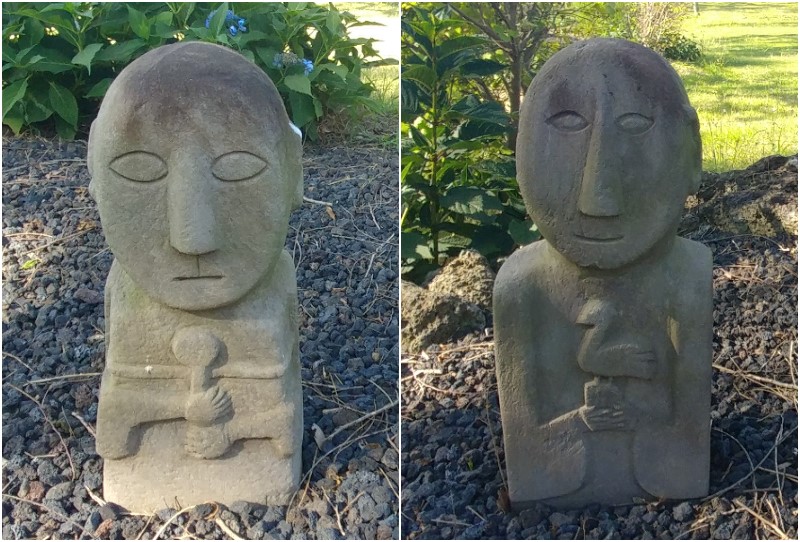박물관은 한 나라의 역사와 문화가 살아 숨 쉬고 과거와 현재, 미래가 공존하는 공간이다. 그 나라의 문화의 힘을 확인할 수 있는 장소이기도 하다. 코리아넷이 대한민국의 지역별 국박물관 6곳을 선정, 그곳에서 놓쳐선 안될 대표 소장품을 소개한다. 드디어 박물관 시리즈의 마지막 편, 제주의 역사와 섬 문화가 살아 숨 쉬는 국립제주박물관으로 떠난다.
A museum is where a country’s history and culture live and breathe and the past, present and future coexist, as well as showing the nation’s cultural power. Korea.net has selected six national museums by region to introduce leading must-see works displayed at each. The final installment of the series is about Jeju National Museum, where the history and culture of Jeju Island are alive and well.
1. 한국에서 가장 오래된 신석기 토기 ‘고산리식 토기’’ – Oldest earthenware in Korea: Gosan-ri type pottery
화산섬인 제주는 하천에 물이 흐르지 않아 예로부터 물이 귀했다. 이 때문에 ‘용천수’가 제주도민의 생명수 역할을 했다. 용천수가 솟아나는 해안을 따라 마을이 형성된 이유다. ‘용천수’는 지하수가 암석이나 지층의 틈새를 통해 지표면으로 솟아나는 물이다.
Since ancient times, water has been a precious resource on Jeju Island since the volcanic island has no rivers. This explains the formation of villages along the coasts, where yongcheonsu (spring water) ensured life for residents. Yongcheonsu is groundwater that surges to the earth’s surface through crevices in rocks or formations.

그 중에서도 큰 마을을 이룬 곳은 지금의 제주시 한경면 고산리 지역. 이곳에서 다양한 신석기 시대 유물들이 발굴됐다. 특히 ‘고산리식 토기’는 가장 주목받는 유물이다.
Of these villages, the largest was the present Gosan-ri area in the township of Hangyeong-myeon in Jeju City. Among remains from the Early Neolithic era discovered here, Gosan-ri type pottery has gained the most attention.
기원전 8천년 무렵에 제작된 것으로 추정되는 신석기 시대 토기다. 한국에서 가장 오래된 신석기 시대 토기란다. 한반도의 빗살무늬토기보다 2천 년 이상 앞선 것이다. 이재호 국립제주박물관 학예연구사는 “다른 지역의 토기와 다른 점은 표면에 식물의 잎이나 줄기를 붙였던 흔적이 독특한 문양처럼 남아있다는 점” 이라며 “한국에서 가장 오래된 신석기 토기가 제주도에서 만들어졌다는 것은 상징적인 의미가 있다”고 평가했다.
Believed to date back to around 8,000 B.C. as the nation’s oldest pottery from the Early Neolithic Era, the relic predates comb pattern pottery discovered on the Korean Peninsula by over 2,000 years.
“What makes this earthenware different from those in other regions is traces of plant leaves or stems stuck to the surface appearing as unique designs,” said Lee Jaeho, assistant curator at Jeju National Museum. “That Korea’s oldest Early Neolithic pottery was made on Jeju Island is highly symbolic.”
2. 떠난 이와 남은 이를 위로하는 ‘동자석’’ – Comforting those who left and stayed: dongjaseok (statues of children)

초록빛 나무와 잔디, 형형색색의 제주 자생 식물로 가득한 박물관 옥외 정원. 그 한 켠에 수십 개의 자그마한 석상들이 서 있다. 크기와 모양도 제각각, 어린 아이의 모습을 한 ‘동자석’이다.
The museum’s outdoor garden is full of green trees and grass and colorful plants indigenous to the island. On one side are dozens of small stone statues of children called dongjaseok of varying sizes and shapes.
제주의 무덤 앞에는 예로부터 동자석을 세웠다. 이 학예연구사는 “동자석은 무덤을 지키고 죽은이의 영혼을 위로하는 역할을 한다” 며 “천진무구한 어린아이가 망자의 혼을 받들고 심부름한다는 의미”라고 설명했다.
Since ancient times, such statues have been put up in front of graves. “Dongjaseok is said to protect a grave and console the soul of the dead,” Lee said. “It means an innocent child carries the soul of the dead and runs the latter’s errands.”

공손히 가슴 앞에 모은 두 손에는 숟가락, 부채, 꽃, 술병 등 여러 가지 물건을 들고 있다. 죽은 이가 평소 좋아했거나 영혼의 안녕을 바라는 마음을 담아 표현한 것이다. 주걱과 숟가락은 죽은 뒤에라도 굶주리지 않기를 바라는 산 사람의 소망이 담겨 있단다. 부채는 무더위를 식히고 벌레를 쫓아내는 데 요긴하게 쓰였을 거라고.
A statue’s hands gathered politely in front of its chest hold items such as spoons, fans, flowers and alcohol bottles. This showed the favorite things of the dead while they were alive or the wish for their souls to rest in peace. Rice paddles and spoons were said to reflect the wish of the dead not to starve even in the afterlife. Fans were believed to cool off from the heat and ward off bugs.
# 국립제주박물관 더 즐기기 – Tips to enjoy Jeju National Museum
– 입구로 들어가 바로 보이는 중앙홀 가운데 서서 천장 위를 올려다 보자. 탐라(제주의 옛 이름) 개국신화인 ‘삼성신화’와 제주를 상징하는 삼다(三多 : 돌, 바람, 여자)가 화려한 스테인드글라스로 표현돼 있다.
– Enter the museum, stand in the middle of the central hall at the entrance and look up at the ceiling. The stained glass represents the Myth of Samseong on the founding of Tamna, the island’s former name, and the three symbols of Jeju: stones, wind and women.

– 제주국제공항에서 차로 20분이면 도착할 수 있다. 공항에서 그리 멀지 않은 곳에 있는 만큼 제주 여행의 시작 혹은 끝을 국립제주박물관에서 즐겨보는 것도 좋을 듯하다. 국립제주박물관으로 ‘혼저옵서예'(제주 방언으로 ‘어서 오세요’)!
The museum is a 20-minute drive from Jeju International Airport. Because of its proximity to the airport, a visit to the museum should either start or end a trip to the island. Everyone is “honjeoopseoye,” or “welcome” in Jeju dialect, at Jeju National Museum.
제주 = 글·사진 이경미 기자 km137426@korea.kr
By Lee Kyoung Mi, km137426@korea.kr
Photos = Lee Kyoung Mi
